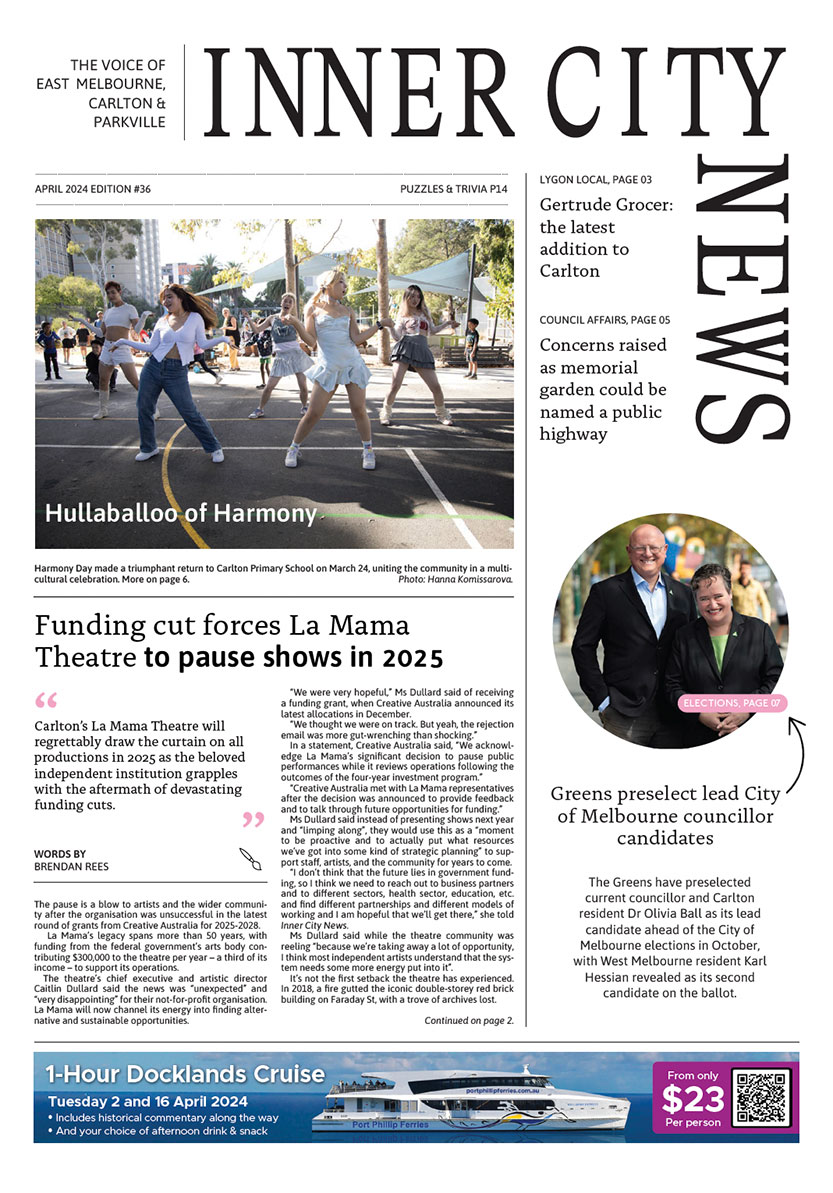Valetta – an East Melbourne story
By Sylvia Black
East Melbourne’s first Crown land sales were held on November 18, 1852.
Prior to this the area had been a popular place for local Aboriginal groups who were attracted to its swamps and lagoons as fishing grounds. Then came Captain Lonsdale in 1836 and Superintendent La Trobe in 1839, but most influential was Bishop Perry who chose East Melbourne as the place to build Bishopscourt, completed in 1853 and which still stands today as the Anglican Archbishop’s permanent residence. Perry is credited with setting the tone for the future suburb.
One of the earliest houses to be built in East Melbourne is Valetta at 206 Clarendon St on the corner of Albert St and just across the road from Epworth Freemasons Hospital. It has had a chequered history which in many ways parallels the history of East Melbourne as a whole. It was built in 1856 when the area was still mainly bushland, sprinkled with river red gums and wattle trees. The architect was Osgood Pritchard who was commissioned by John Gray, a farmer and horse breeder. Gray was a restless man and moved out within two years.
From 1861 to 1865 Valetta was leased to Mr and Mrs Vieusseux who ran a ladies’ college there before moving to other premises. It was one of numerous schools that were a feature of the East Melbourne landscape. Many of these are still going, although no longer in East Melbourne, such as Scotch, Presbyterian Ladies College, Catholic Ladies College, Ormiston (now Camberwell Grammar), Parade College, and the Model School which eventually split into Melbourne Boys High and Mac.Robertson Girls High. Now there is a dearth of local schools with the last one, St John’s Primary, closing its doors in 2008.
Next to move into Valetta was Lowe Kong Meng, regarded as the principal Chinese merchant in Melbourne. He had his own fleet of ships and traded in bêche-de-mer, tea and opium among other things. He married an English woman and had six children and lived the life of an English gentleman. Also living in the house was his pet kangaroo. He was very popular. He gave to many charitable organisations and was especially helpful to newly-arrived Chinese immigrants. The Emperor of China awarded him the title of “Mandarin of the Blue Button”. Lowe moved out in 1875. Shortly beforehand there had been a very nasty incident when a man cleaning out a cesspit in the back yard was overcome by fumes and died.
Redmond Barry, Supreme Court Judge and first Chancellor of the University of Melbourne, became owner and occupier in 1879. It seems that it was here for the first time he shared an address with his long-time companion and mother of his children, Louisa Barrow. Barry died at Valetta in 1880, only 12 days after the execution of Ned Kelly, over whose trial he famously presided. The huge funeral cortege of around 130 vehicles assembled outside the house and along Clarendon St (pictured) before leaving for the Melbourne General Cemetery.
From 1903 to 1940 Valetta was home to Dr Edward Augustus Spowers who conducted his medical practice at the same address. He was one of many East Melbourne residents to enlist during WWI, serving in the Medical Corps. He returned with several jugs he made out of copper shells retrieved from the battlefields. He had them on display in his house where they were much admired by his friends. During his time there, in 1929, he built a small block of “bachelor flats” in the back yard.
For another 10 years the house continued as medical rooms, but in 1950 at a cost of £25,000 the Country Fire Authority purchased the property as its headquarters. New owners later rented the house to the Australian Conservation Foundation before selling to the Red Cross which knocked down the flats and built smart new offices. In 1998 they too sold. The new owner converted the offices to upmarket apartments. But since that time the house has remained vacant and neglected amid much local controversy. News just recently to hand suggests that restoration is soon to take place. We hope this is so •

Carlton language school championed by Ukrainian refugee




 Download the Latest Edition
Download the Latest Edition